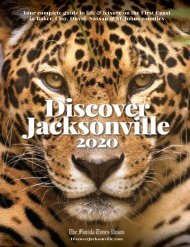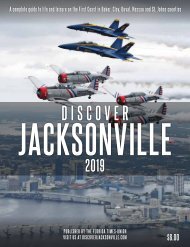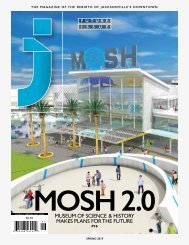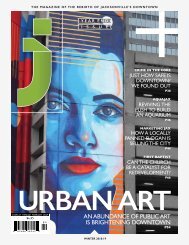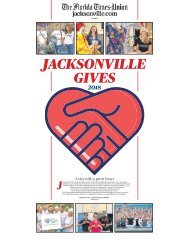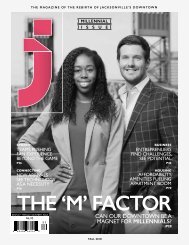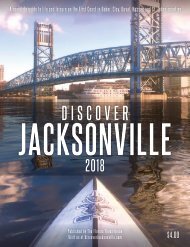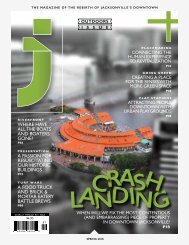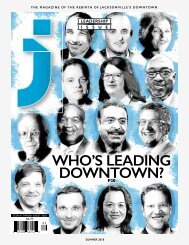J Magazine Winter 2019
You also want an ePaper? Increase the reach of your titles
YUMPU automatically turns print PDFs into web optimized ePapers that Google loves.
But this time, they faced a popular mayor, Allen Street, who<br />
teamed up with powerful newspaper publisher, E.K. Gaylord, to force<br />
through what was initially promoted as a “temporary” experiment.<br />
The city was represented by Illinois traffic planner George W.<br />
Barton, who called all the protesters’ claims untrue and responded;<br />
“No auditor’s statements have been presented to support the<br />
claims that merchants in Fort Worth, Dallas or Little Rock lost business.”<br />
Gaylord, publisher of The Daily Oklahoman, pointed to all the<br />
major steps of progress in Oklahoma City that had been achieved<br />
only after bitter fights.<br />
“Oklahoma City must go ahead,”’ Gaylord said. “We have 80,000<br />
cars here now and we will have another 5,000 cars in the next five<br />
years as soon as they become available. If we don’t relieve the traffic<br />
condition downtown businesses will move out.”<br />
The city council, following the lead by Mayor Street, approved<br />
what was to be a 90-day experiment.<br />
The hit along Hudson Avenue, one of the first converted streets,<br />
was immediate. A bakery owner warned her business was experiencing<br />
a devastating drop in business. C.C. Kuhn, zone manager<br />
for Safeway, said the chain’s store on Hudson experienced a<br />
“marked” drop in business.<br />
In 2000, pedestrians scamper across Oklahoma City’s six-lane Hudson Avenue.<br />
The bustling one-way street was eventually converted to a safer two-way street.<br />
“We don’t know how far it can go but we are watching the situation<br />
very carefully,” Kuhn said. “We depended a lot on the business<br />
received from workers going home at night which we don’t<br />
get anymore.”<br />
The experiment never ended, and the one-way streets, combined<br />
with the advent of suburban malls with free parking, killed<br />
off the retailers, restaurants, theaters and businesses that made<br />
downtown vibrant.<br />
Traffic counts on the one-way streets plunged in the 1970s as<br />
highways were cut through the south and east fringe of downtown.<br />
Yet, for the most part, the one-way streets were maintained.<br />
By the centennial of the city’s birth, the city council itself admitted<br />
they had made a series of mistakes — the abandonment of<br />
streetcars, the advent of one-way streets, the destruction of an aggressive<br />
urban renewal program — and that those choices had laid<br />
waste to downtown Oklahoma City.<br />
Wide one-way streets were lined with surface and structured<br />
parking, empty old storefronts and superblocks lined with office<br />
buildings.<br />
WINTER <strong>2019</strong> | J MAGAZINE 57



